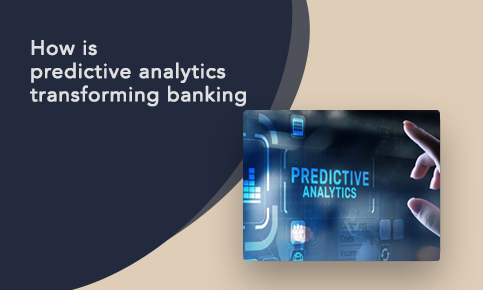Financial Institutions extract information from existing data to ascertain customer patterns and predict future outcomes and trends, known as predictive analytics. They forecast future with acceptable level of risk, reliability and scenarios. Predictive analytics assist financial institutions fetch admissible customer data, identify risk and fraud, screen varying applications, manage customer experience and relationships basis past and predicted variables.
Traditional institutions and upstarts are manovuering through this transformation and relying on the outcomes it offers. Presenting a few key transformative elements through adoption of predictive analytics-
- Credit Scoring- Credit scores are a prerequisite to availing financial assistance from financial institutions; used to predict the ‘propensity to default’ (PD) by a customer. Predictive analytics has enabled financial institutions to measure customer profiles with the help of modeling tools such as credit risk scoring, collection scoring, etc. These scores have allowed financial institutions to analyze and measure their credit risk while offering financial services.
- Fraud Detection and Prevention- According to a survey by KPMG, banking fraud has risen by 60% globally in recent years. Scams, phishing, data theft, identity fraud, etc. have become common and predictive analytics has enabled financial institutions to identify risk patterns and curb fraud. With the help of monitoring systems that scan data continuously, suspicious activities are triggered helping financial institutions assess the risk quotient.
- Risk Assessment- With financial institutions competing for ‘financial inclusion, they are targeting segments with limited to no credit history, putting themselves into high-risk range. Moreover, onboarded customers pose the risk of money laundering. Predictive analytics helps financial institutions by analyzing profiles of customers with limited information and highlighting high-risk profiles by analyzing transactional data.
- Customer Experience (CX)- With CX gaining prominence in recent times, financial institutions are continuously attempting to improve it at each consumer touchpont. Predictive analytics has helped them understand customer preference, need, behaviour, pattern, etc. thereby offering personalized services that enhance the overall customer journey.
- Investment Decisions- Investment bankers were heavily invested in for the expertise they possessed in the financial arena. Predictive analytics has allowed financial institutions to reduce their manpower cost by introducing robo-advisory services. For instance, Moneyfront, a Robo-advisory wealth tech platform, offers personalized investment options through advanced scientific algorithms.
- Product Development- Financial circles are growing highly competitive with the launch of newer and innovative products to match customer expectations. With the help of artificial intelligence, machine learning, big data analytics, etc., financial institutions are able to get critical consumer insights that are then implemented for product development.
- Customer Support and Retention- In a highly competitive area where customers are gratified, it is imperative financial institutions take note of customer perception and satisfaction degree. Predictive Analytics gives financial institutions insights into customer expectation and decision making criterias thereby, assisting them in retaining customers.
Challenges of Predictive Analytics
Predictive Analytics look for patterns and behavioural science in every scenario and so, its rulings and analysis are basis of the data it is fed through interactions, perspective gathering, demographics analysis, consumer behaviour etc.Therefore, financial institutions must procure and manage quality data to match customer expectations since feeding substandard or incorrect data can result in detrimental results.
Cross-selling, upselling, customer satisfaction trends, operational efficiencies etc., are a few more elements offered by predictive analytics that has successfully assisted financial institutions in making data driven decisions and multiplying their service and product stack while maintaining efficacy.

